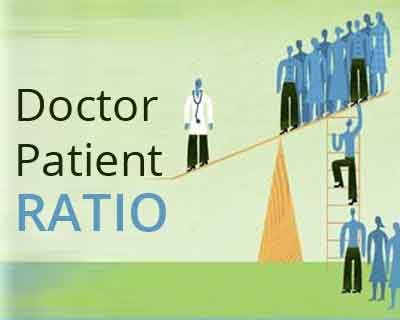- Home
- Medical news & Guidelines
- Anesthesiology
- Cardiology and CTVS
- Critical Care
- Dentistry
- Dermatology
- Diabetes and Endocrinology
- ENT
- Gastroenterology
- Medicine
- Nephrology
- Neurology
- Obstretics-Gynaecology
- Oncology
- Ophthalmology
- Orthopaedics
- Pediatrics-Neonatology
- Psychiatry
- Pulmonology
- Radiology
- Surgery
- Urology
- Laboratory Medicine
- Diet
- Nursing
- Paramedical
- Physiotherapy
- Health news
- Fact Check
- Bone Health Fact Check
- Brain Health Fact Check
- Cancer Related Fact Check
- Child Care Fact Check
- Dental and oral health fact check
- Diabetes and metabolic health fact check
- Diet and Nutrition Fact Check
- Eye and ENT Care Fact Check
- Fitness fact check
- Gut health fact check
- Heart health fact check
- Kidney health fact check
- Medical education fact check
- Men's health fact check
- Respiratory fact check
- Skin and hair care fact check
- Vaccine and Immunization fact check
- Women's health fact check
- AYUSH
- State News
- Andaman and Nicobar Islands
- Andhra Pradesh
- Arunachal Pradesh
- Assam
- Bihar
- Chandigarh
- Chattisgarh
- Dadra and Nagar Haveli
- Daman and Diu
- Delhi
- Goa
- Gujarat
- Haryana
- Himachal Pradesh
- Jammu & Kashmir
- Jharkhand
- Karnataka
- Kerala
- Ladakh
- Lakshadweep
- Madhya Pradesh
- Maharashtra
- Manipur
- Meghalaya
- Mizoram
- Nagaland
- Odisha
- Puducherry
- Punjab
- Rajasthan
- Sikkim
- Tamil Nadu
- Telangana
- Tripura
- Uttar Pradesh
- Uttrakhand
- West Bengal
- Medical Education
- Industry
One doctor per 893 patients: Health Minister on WHO report

India has one doctor for every 893 patients in the country if allopathic doctors and those practising Ayurveda, Unani and Homeopathy streams are considered together, Lok Sabha was informed. In a written reply, Minister of State for Health Faggan Singh Kulaste said there as 9.59 lakh registered allopathic doctors in the country and 6.77 lakh Ayurveda, Unani and Homeopathy (AUH) doctors.
“Assuming 80 per cent availability of doctors, it is estimated that around 7.67 lakh (allopathic) doctors may be actually available for service. It gives a doctor is to population ratio of 1:1681. If the allopathic and AUH streams are considered together, it gives a doctor population ratio of 1: 893,” the Minister said replying a question on whether the government has taken note of the World Health Organisation (WHO) report which stated that large number of allopathic doctors in the country do not have medical qualification and lower national level of density of all doctors, nurses and midwives.
He said that as per Indian Medical Council Act 1956, only the practitioners enrolled on the state medical register can practice medicine and any person who acts in contravention is liable to be punished with imprisonment and fine. Kulaste said there were 7,89,796 Auxiliary Nurse Midwives (ANM) and 17,93,337 registered nurse and registered midwives (RN&RM) in the country.
“Assuming 80 per cent availability of ANMs and 60 per cent availability of RN&RMs, there would be 17.10 lakh nursing personnel in service in the country which gives a nurse population ratios of 1:748,” the Minister said.


